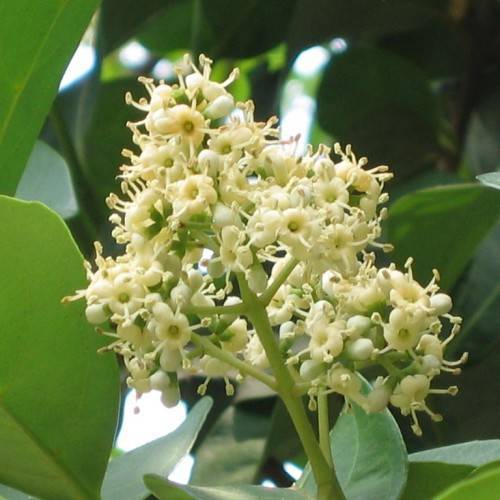
sweet viburnum
Viburnum odoratissimum
Cycle:
Perennial
Watering:
Average
Hardiness Zone:
7 - 9
Flowers:
Flowers
Sun:
Full sun,part shade
Fruits:
Fruits Ready In
Edible:
Yes
Leaf:
Yes
Growth Rate:
High
Maintenance:
Low
Drought Tolerant:
Yes
Care Level:
Medium
watering
Sweet Viburnum should be watered once or twice a week depending on the season and the local climate. During spring and summer, water deeply once or twice a week so that the soil remains moist, but not overly saturated. When it's hot and dry during summer, water deeply more often or apply a thick layer of mulch to help the soil retain moisture. During cool, wet winter months, water the sweet viburnum only when the soil is dry to the touch.
sunlight
Sweet viburnum (Viburnum odoratissimum) usually grows best in direct sunlight for at least 6-8 hours per day. Morning sunlight is preferable and if possible afternoon light can also be beneficial. For optimal growth, it should also be provided a minimum of 3-4 hours of afternoon light. Too much direct sunlight can cause leaves to burn, so if the temperatures are above 80F (26C), it is best to provide partial shade to protect the plant from scorching.
pruning
Sweet viburnum should be pruned 2 to 3 times during its growing season—early spring, late summer, and winter. In early spring, sweet viburnum should have its dead wood and crossing branches removed. This will help to ensure the growth of healthy and vigorous shoots. In late summer, lightly prune the top and sides of the plant to help promote new growth. Finally, in winter, remove any dead or crossing branches. This will also help to encourage flowering in the following season.
